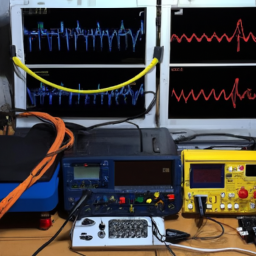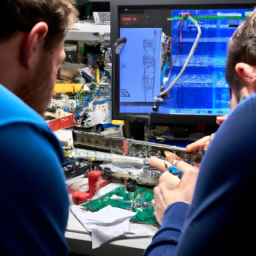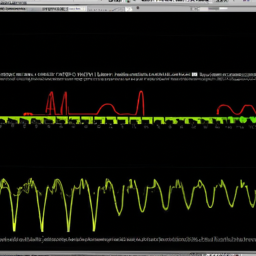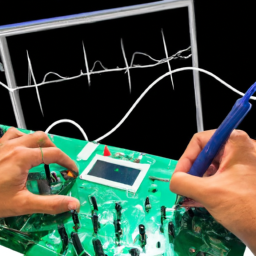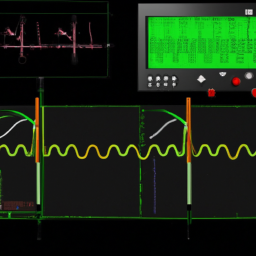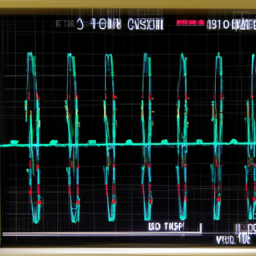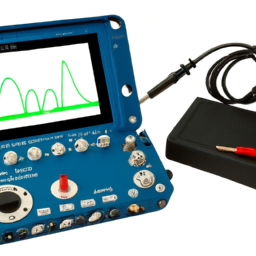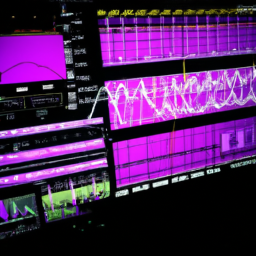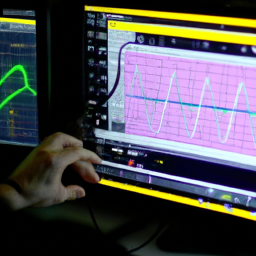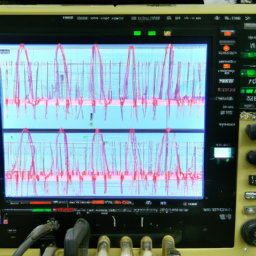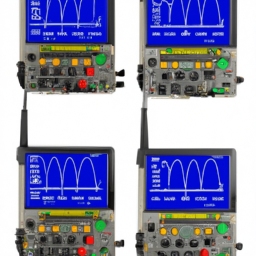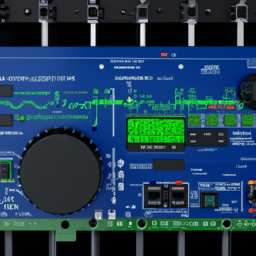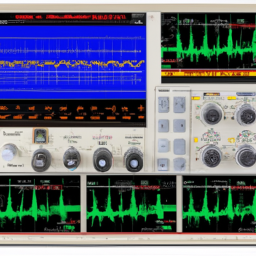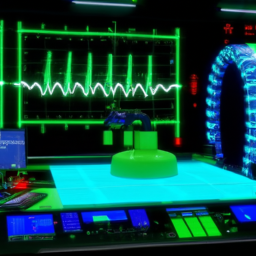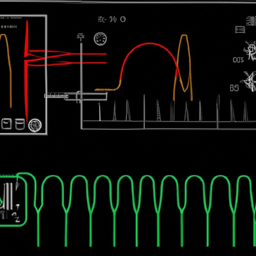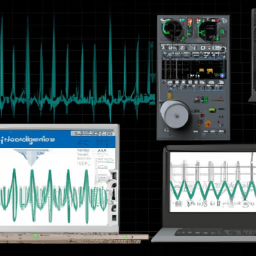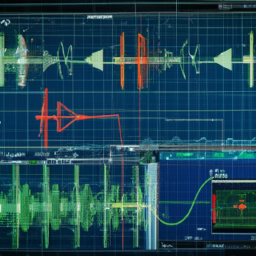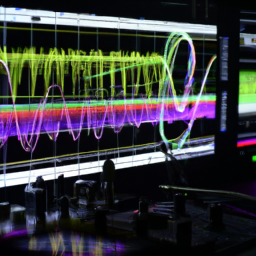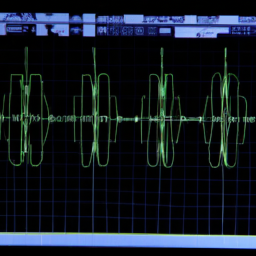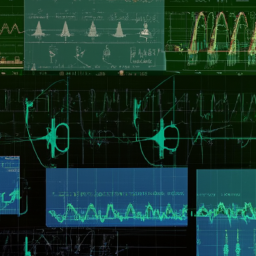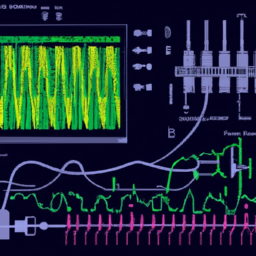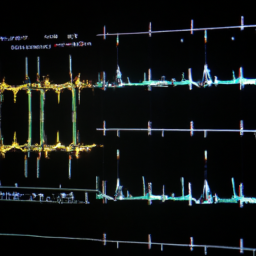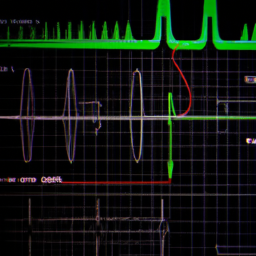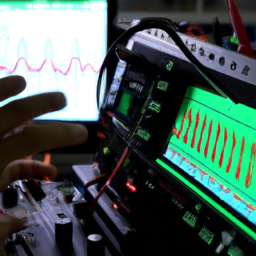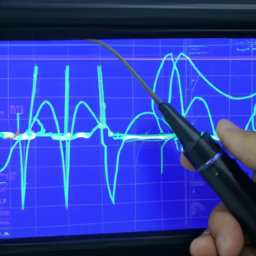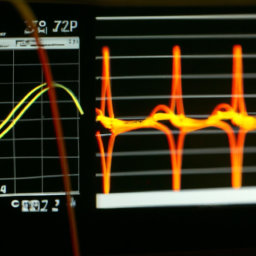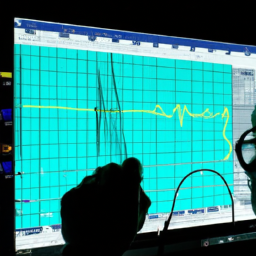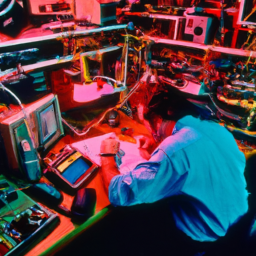Do you ever find yourself frustrated and puzzled when debugging your embedded systems? You’re not alone. The world of embedded systems is complex, with countless variables and components that can go awry. But fear not! There is a powerful tool at your disposal that can help you unravel the mysteries of your embedded systems: the oscilloscope probe.
In the realm of debugging, oscilloscope probes play a crucial role in analyzing and troubleshooting signal integrity issues. These probes allow you to delve into the intricate details of your system’s performance, evaluating the behavior of individual components and pinpointing any potential bottlenecks.
By enhancing measurement accuracy and providing advanced features and techniques, oscilloscope probes give you the power to uncover hidden flaws and optimize your system’s overall performance.
In this article, we will explore the importance of oscilloscope probes in debugging embedded systems. We will delve into the basics of these probes, discuss their role in troubleshooting signal integrity issues, and highlight their ability to evaluate component performance.
Furthermore, we will provide you with useful tips and techniques for effective probe usage. So, get ready to unlock the full potential of your embedded systems with the indispensable tool that is the oscilloscope probe.
Key Takeaways
- Oscilloscope probes are crucial tools for analyzing and troubleshooting signal integrity issues in embedded systems.
- Selecting the right probe for your specific application is important for accurate measurements.
- Oscilloscope probes help identify noise and distortion by capturing and analyzing signals.
- Proper probe placement and calibration are essential for accurate measurements in embedded system designs.
Understanding the Basics of Oscilloscope Probes
You’re going to love how oscilloscope probes allow you to dive deep into the intricate inner workings of your embedded system, like a detective examining every tiny clue at a crime scene. Understanding the basics of oscilloscope probes is crucial to effectively debug your system.
There are several common probe types to choose from, including passive, active, and differential probes. Passive probes are the simplest and most commonly used, suitable for general-purpose measurements. Active probes, on the other hand, provide higher bandwidth and lower loading effects, making them ideal for high-frequency applications. Differential probes are designed to measure signals that are referenced to ground or each other, eliminating common-mode noise.
Selecting the right probe for your specific application is essential to obtain accurate and reliable measurements, ensuring successful debugging of your embedded system.
Troubleshooting Signal Integrity Issues
When troubleshooting signal integrity issues, you need to focus on three key points.
First, you must be able to identify noise and distortion in the signal. This requires a thorough understanding of the expected signal characteristics and the ability to differentiate between normal and abnormal behavior.
Second, you need to analyze the signal quality to determine if it meets the required specifications. This involves measuring parameters such as amplitude, frequency, rise time, and jitter.
Lastly, you must be able to resolve any signal integrity problems that are identified. This may involve adjusting the circuitry, adding filtering components, or optimizing the signal path to minimize noise and distortion.
Identifying Noise and Distortion
To effectively identify noise and distortion in your embedded system, it’s like using a magnifying glass to reveal hidden imperfections in a delicate masterpiece. Oscilloscope probes play a crucial role in this process by allowing you to capture and analyze the signals with precision.
Common sources of noise and distortion include electromagnetic interference (EMI) from nearby power lines or other electronic devices, as well as ground loops and improper grounding. By connecting the oscilloscope probe correctly and minimizing interference, you can accurately measure the signals and detect any abnormalities.
Additionally, using high-quality shielded cables and keeping the probe leads as short as possible can help reduce noise pickup. With the ability to observe and measure the signals with accuracy, oscilloscope probes are indispensable tools in identifying and troubleshooting noise and distortion in your embedded system.
Analyzing Signal Quality
Using an oscilloscope, you can closely examine the clarity and integrity of the signals in your embedded system, helping you uncover imperfections and irregularities.
When analyzing signal quality, it’s important to be aware of common signal issues that can affect the performance of your system. These issues include noise, distortion, and signal attenuation.
By carefully analyzing the waveform using the oscilloscope, you can identify and quantify these issues, allowing you to optimize signal transmission. The oscilloscope allows you to measure parameters such as rise time, fall time, and signal amplitude, which are crucial for ensuring signal integrity.
Additionally, the oscilloscope enables you to visualize and compare signals, making it easier to pinpoint any abnormalities or inconsistencies.
By utilizing the oscilloscope probes effectively, you can ensure the highest quality signal transmission in your embedded system.
Resolving Signal Integrity Problems
Resolving signal integrity problems can be challenging, but it’s crucial for ensuring the reliability and performance of your electronic devices. One interesting statistic is that signal integrity issues can account for up to 70% of overall system failures, highlighting the importance of addressing these problems effectively.
To identify the root causes of signal integrity problems, you need to analyze the waveform using your oscilloscope. Look for anomalies such as ringing, overshoot, or reflections that can degrade the signal quality. Additionally, check for impedance mismatches or noise sources that may be causing the problem.
Once you’ve identified the root causes, you can implement effective solutions to resolve the signal integrity issues. This may involve adjusting termination resistors, improving grounding techniques, or using signal conditioning techniques such as equalization or pre-emphasis.
By effectively resolving signal integrity problems, you can improve the performance and reliability of your embedded system, ensuring that it functions as intended.
Evaluating Component Performance
When it comes to evaluating component performance in embedded systems, oscilloscope probes play a crucial role in ensuring accurate measurements. Performance analysis is essential to identify any issues and optimize techniques for better system functionality.
Oscilloscope probes enable engineers to analyze the performance of individual components, such as microcontrollers, sensors, and communication interfaces. By connecting the probe to the specific component’s test points, engineers can observe and measure signals, including voltage levels, waveforms, and timing characteristics. This allows for a comprehensive evaluation of the component’s performance, including its response time, noise levels, and signal integrity.
With this information, engineers can identify any performance bottlenecks or potential issues and make necessary adjustments to optimize the system’s overall performance. Oscilloscope probes provide the necessary precision and accuracy required for evaluating component performance, making them an indispensable tool in the debugging process of embedded systems.
Enhancing Measurement Accuracy
Now that you’ve evaluated the performance of your components, it’s time to focus on enhancing measurement accuracy in your debugging process. This is crucial to ensure that you’re getting precise and reliable data from your embedded systems.
Oscilloscope probes play a vital role in this task. By using high-quality probes and optimizing measurement techniques, you can significantly improve the precision of your measurements. It’s important to select the appropriate probe for your specific application, considering factors such as bandwidth, impedance, and attenuation ratio.
Additionally, proper probe placement and calibration are essential for accurate measurements. By paying attention to these details and investing in high-quality probes, you can optimize the accuracy of your measurements and enhance your overall debugging process.
Advanced Features and Techniques
One fascinating statistic is that advanced features and techniques can improve measurement accuracy by up to 20%.
When it comes to oscilloscope probes, advanced probe calibration plays a crucial role in achieving accurate measurements. Calibration ensures that the probe’s characteristics are precisely known and compensated for, resulting in more reliable measurements.
Additionally, advanced oscilloscope probes offer techniques for measuring high-frequency signals. These probes are designed to handle fast rise times and high bandwidths, allowing for accurate measurements of high-frequency signals without distortion. Techniques such as active probes, differential probes, and current probes enable precise measurements of complex waveforms and signals in embedded systems.
By utilizing these advanced features and techniques, engineers can enhance their debugging capabilities and ensure accurate measurements in their embedded system designs.
Tips for Effective Probe Usage
Maximize your measurement accuracy and reliability by following these tips for effective probe usage.
-
Perform regular probe calibration: It’s essential to calibrate your oscilloscope probes periodically to ensure accurate measurements. Calibration compensates for any deviations in probe performance, providing more reliable results.
-
Understand probe impedance: Probe impedance can affect signal integrity. Choose probes with appropriate impedance matching for your specific application. High impedance probes are suitable for high-frequency signals, while low impedance probes are better for low-frequency signals.
-
Minimize ground lead length: Long ground leads can introduce additional noise and affect signal integrity. Keep ground leads as short as possible to reduce the impact of unwanted noise.
-
Avoid excessive probe loading: Excessive probe loading can alter the measured signal. Use probes with high input impedance to minimize the loading effect and ensure accurate measurements.
By following these tips, you can optimize your probe usage and achieve more accurate and reliable measurements in your embedded system debugging process.
Frequently Asked Questions
Can I use any oscilloscope probe with any oscilloscope model?
You can’t fit a square peg in a round hole. Compatibility constraints exist when using different oscilloscope probes with specific oscilloscope models.
Not all probes are designed to work with every oscilloscope, so it’s important to check the compatibility before purchasing or using a probe. Additionally, using different probes can have an impact on measurement accuracy and signal integrity.
Consider the performance considerations when selecting a probe that suits your specific needs and ensures accurate debugging.
How can I choose the right oscilloscope probe for my specific application?
To choose the right oscilloscope probe for your specific application, you need to consider the frequency range, bandwidth, and impedance of the probe. Higher frequencies require probes with higher bandwidths. You should also match the probe’s impedance to the device under test to avoid signal distortion. It is important to consider the probe’s attenuation ratio for accurate measurements. Additionally, make sure to check for probe compatibility with your oscilloscope model. By choosing the right oscilloscope probe, you can effectively troubleshoot and diagnose issues in your embedded systems.
What are some common challenges when using oscilloscope probes and how can I overcome them?
To overcome common challenges when using oscilloscope probes, you need to address probe impedance and troubleshooting probe grounding.
Probe impedance, which affects signal integrity, can be overcome by using high-quality probes with low input capacitance.
Troubleshooting probe grounding issues can be resolved by ensuring proper connections and using ground leads with low resistance.
By addressing these challenges, you can enhance the accuracy and reliability of your oscilloscope measurements, leading to more effective debugging of embedded systems.
Are there any specific safety precautions I need to take when using oscilloscope probes?
When using oscilloscope probes, it’s essential to follow safety precautions to ensure proper usage. Firstly, ensure that the oscilloscope and probe are rated for the voltage level you’re working with.
Inspect the probe and cables for any damage before connecting them. Use appropriate grounding techniques to prevent electrical shocks.
Lastly, avoid placing the probe near high-energy sources or moving parts. Adhering to these safety precautions will help protect both you and your equipment.
Can I use oscilloscope probes for high-frequency applications or are they limited to low-frequency measurements?
Oscilloscope probes can indeed be used for high-frequency applications, providing several advantages. They offer a wide bandwidth and excellent signal fidelity, making them suitable for capturing and analyzing fast and complex waveforms.
Compared to other high-frequency measurement tools like spectrum analyzers, oscilloscope probes allow for a more detailed examination of the waveform characteristics. They are essential for precise measurements and accurate debugging in high-frequency applications.
Conclusion
In conclusion, the oscilloscope probe is a critical tool for debugging embedded systems. Its importance lies in its ability to accurately measure and analyze signals, troubleshoot signal integrity issues, evaluate component performance, and enhance measurement accuracy.
For example, imagine a scenario where a company is experiencing intermittent issues with their IoT device. By using an oscilloscope probe, they’re able to pinpoint the problem to a faulty component, saving them time and money in identifying and resolving the issue.
The oscilloscope probe is truly indispensable in the world of embedded systems.


